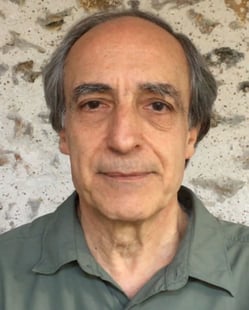

ANIMAFEST PRO | ANIMAFEST SCANNER VII | SIMPOZIJ O SUVREMENOJ ANIMACIJI | Panel 3 – ANIMATION AND POETRY
A "Blind" or “Tactile” Animation Approach - Georges Sifianos (ENSAD, Paris, France)
Poetry uses ambiguity. (1) This leaves space in the text for reader's imagination. Poetry also uses formal tools close to music such as rhythm, number of syllables, rhyme, accent position, etc. This poetic approach is found in all the arts. By freeing itself from the naturalism sought by photography, for example, painting can evolve into impressionism. Through the analysis of colors, the viewer is invited to participate in the creation of the painting, which only ends in his brain passing through his retina...
What does animation do? For some time I have been working on a "blind" animation approach. This means working only by the tactile sensation, without looking at the paper while drawing. The result is surprising: This kind of “blindness” liberates. Without the aid of visual intervention (to correct ‘mistakes’), the drawing becomes livelier and more spontaneous. The result recalls the analysis of impressionism and cubism... Set in motion, these drawings reveal yet another dimension: abandoning the rigor, they organize themselves by means of the average: If a single position among several is correct, it will be identified and highlighted by our perception. The others will be automatically devalued, as belonging to the context. Our perception creates a hierarchy and seeks meaning. It favors information-carrying forms (2) and reduces others to "noise".
In Zagreb’s “Scanner”, I would like to present experiments and reflections on this "blind" animation approach, which is an unexplored path of poetic animation.
(1) J. Cohen, Structure du langage poétique, Paris, Champs Flammarion, 1966, p.78
(2) As Youri Norstein's stepfather, psychologist Alfred Yarbus, famous for his studies on eye movements, demonstrated. Alfred Yarbus, Eye Movements and Vision, NY, Plenum Press, 1967
Georges Sifianos, born in Greece, holds a PhD in animation aesthetics from Sorbonne. He is a filmmaker and professor emeritus of animation at ENSAD in Paris where he founded the Department of Animation Studies. He has also lectured at universities in Europe, India, Korea, Japan and China among others. As a member of PSL academic research group, SACRe (EA 7410), he is interested in the renewal of forms of animation cinema, particularly from the point of view of cognitive science. His book Aesthetics of Animated Cinema received the "McLaren - Lambart" award for the 2014 Society for Animation Studies Best Academic Book and the "Hemingway Grant" in 2015. His recent research focuses on animation forms found on the Parthenon’s Frieze. His filmography includes the animated films Smile, Scent Of City, Tutu, Ego and the feature-film documentary Petrochemicals, The Cathedrals Of The Desert.


